Remember when kids’ rooms weren’t perfectly curated Instagram-worthy spaces? Back before design blogs and Pinterest boards dictated children’s décor, our bedrooms were authentic reflections of our interests and the era we grew up in. These rooms weren’t styled for social media – they were lived-in spaces filled with treasures that defined our childhoods. Let’s take a nostalgic walk through the must-have items that graced nearly every kid’s bedroom from the 1960s through the early 1990s.
1. Plastic Milk Crates as Bookshelves

Those colorful, sturdy plastic crates that were “borrowed” from somewhere and never returned became the ultimate storage solution for every kid’s growing collection of stuff. We’d stack them horizontally or vertically to create customizable shelving for books, records, cassettes, and treasures that didn’t fit anywhere else. Parents appreciated their practicality and price (free), while kids loved how easily they could rearrange them when the mood struck. DailyCrates asserts that milk crates, in general, are almost upsettingly great in terms of design, visuals, and overall versatility.
These makeshift shelves represented our first attempts at personal organization and interior decorating before such concepts were even on our radars. The milk crates came in basic primary colors that somehow worked with everything, despite clashing with most actual décor schemes. When we eventually moved to college dorms, these faithful storage companions often came along for the ride, proving their timeless utility across generations.
2. Wood Paneling or Wildly Patterned Wallpaper

Before neutral color palettes became the norm, kids’ rooms featured dramatic wood paneling or wallpaper with bold, sometimes psychedelic patterns that would make today’s minimalist designers faint. Orange and brown mushroom patterns, cartoon characters, racing stripes, or faux wood grain covered our walls, creating the backdrop for our childhood adventures. Parents committed to these design choices knowing they’d be stuck with them for years due to the labor-intensive process of removing and replacing wallpaper. House Beautiful writes that some of these old design trends are making a comeback for households in general, so kids may rejoice that their favorite decor could be everywhere.
These busy backgrounds somehow managed to coexist with our equally busy collections of posters, pennants, and artwork without anyone worrying about “visual clutter.” The wallpaper often remained long after its prime, with corners peeling away or seams separating after years of wear and tear. Many adults today can still vividly recall the specific patterns that surrounded them during formative years, triggering powerful sensory memories of childhood bedrooms.
3. AM/FM Clock Radio

Long before smartphones became alarm clocks, a plastic digital clock radio occupied prime real estate on the bedside table of virtually every kid’s room. These essential devices often featured red LED displays that glowed ominously in the dark and buttons that made satisfying clicking sounds when pressed. Many of us learned to tell time by watching those glowing numbers change, minute by minute, when we should have been sleeping. The Bulwark gives a special shoutout to the radio clock as a significant moment for both the development of radio and for consumers as a whole.
The radio component served as our personal portal to music discovery, often tuned to the local pop station with the volume kept low so parents wouldn’t hear after bedtime. The imprecise alarm function meant you’d often wake up to the middle of a song or a DJ’s voice, creating a somewhat jarring but memorable start to the school day. For many kids, owning a clock radio represented a small but significant step toward independence and responsibility.
4. Pennants and Sports Posters

Triangular felt pennants from tourist destinations, sports teams, and colleges adorned walls as colorful declarations of personal affiliations and aspirations. These inexpensive souvenirs were typically pinned directly to the wall (much to parents’ dismay) or strung together to create colorful bunting across one corner of the room. Each pennant told a story about a family vacation, a favorite team, or a dream school that occupied our young imaginations. Weebly goes into just how surprisingly far back the history of felt pennants reaches.
Alongside these pennants hung posters of sports heroes in action poses, typically torn from magazines or purchased at school book fairs. These posters rarely enjoyed the luxury of proper framing – instead, they were attached with colorful thumbtacks, yellowing Scotch tape, or that miraculous sticky blue substance that left oily marks on the walls. The specific athletes featured on these posters immediately dated the room to a particular era and provided insight into the occupant’s heroes and aspirations.
5. Hand-Me-Down Furniture
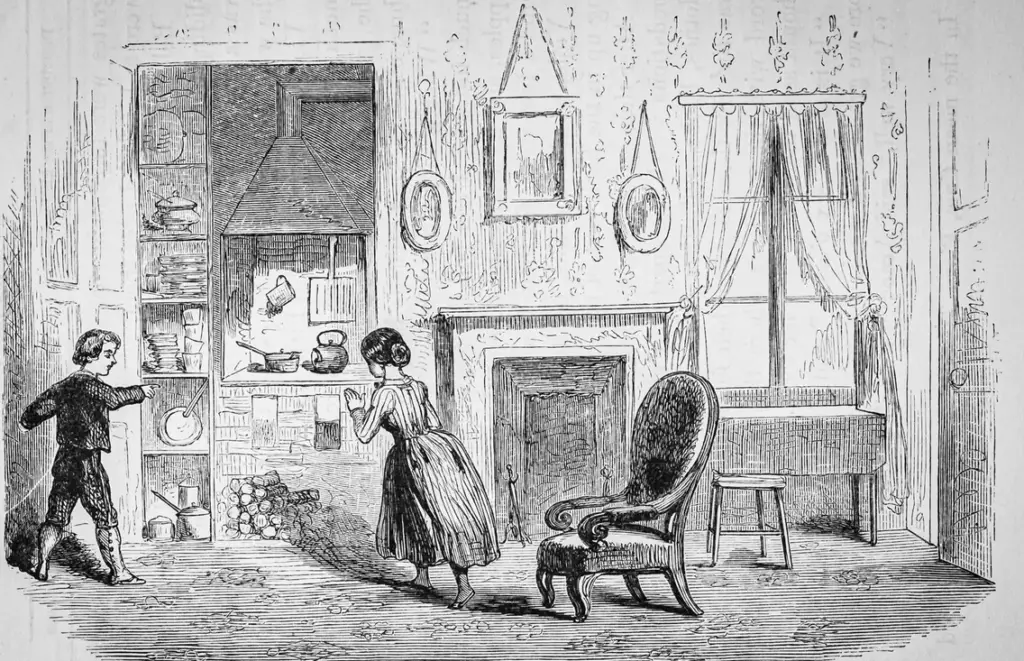
Before kids’ furniture became its own specialized industry, our rooms contained an eclectic mix of cast-offs and hand-me-downs that had been deemed “too worn” for the main living spaces. Scratched dressers, wobbly nightstands, and beds that had served at least one previous owner became the foundation of our personal domains. These pieces often sported mismatched hardware, slightly sticky drawers, and the occasional mysterious stain with an origin story lost to family history.
Parents would occasionally refresh these pieces with a new coat of paint – often in primary colors or whatever leftover paint was available in the garage. The practical, sturdy nature of this older furniture meant it could withstand the jumping, climbing, and general abuse that kids inevitably inflicted upon their surroundings. Many of these pieces have now come full circle, becoming sought-after “vintage” items by the very children who once took their presence for granted.
6. Collection of Trophies and Ribbons
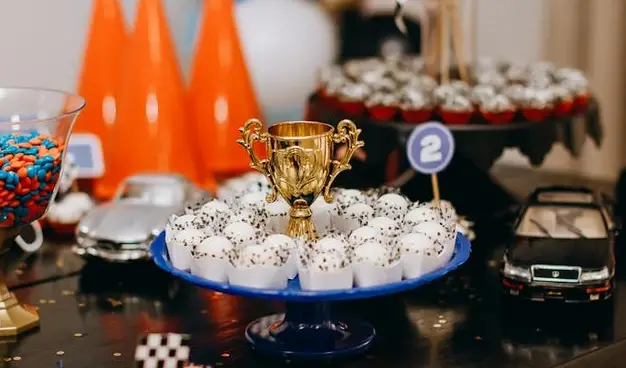
Whether earned through genuine athletic prowess or just for showing up to participate, a collection of plastic trophies and colorful ribbons adorned most kids’ bookshelves. These awards commemorated seasons of soccer, swimming meets, science fairs, and participation in school competitions, creating a visual timeline of childhood activities. Parents encouraged displaying these symbols of achievement, regardless of whether they represented first place or just good sportsmanship.
The gold-colored plastic figures atop the trophies often became loose over time, making them wobbly representatives of past glory. Dust collected in the crevices of these awards as seasons changed and interests shifted, but they remained displayed long after their relevance had faded. These collections represented a pre-digital form of achievement tracking, physical reminders of experiences that today might only be commemorated with a social media post.
7. Bean Bag Chair

That shapeless lump of vinyl-covered styrofoam beads served as the ultimate casual seating option in kids’ rooms across America. Available in vibrant colors and various sizes, bean bag chairs represented freedom from conventional furniture rules and created the perfect lounging spot for reading, gaming, or watching TV. The distinctive sound of shifting beans announced any movement, making it impossible to secretly adjust your position during quiet reading time.
Eventually, most bean bags developed small tears that leaked tiny white beads across the carpet, becoming permanent additions to the room’s ecosystem despite vacuuming efforts. Despite their impractical nature and short lifespan, these chairs held a special place in our hearts as furniture that seemed designed specifically with kids’ preferences in mind. The joy of flopping dramatically into a bean bag after a long school day remains a distinctly nostalgic physical memory for many adults who grew up before structured furniture arrangements became the norm.
8. Bulletin Board Covered in Memorabilia

Cork bulletin boards served as analog social media profiles, displaying concert tickets, photo booth strips, birthday cards, and notes passed in class. These personal collages evolved constantly as new memories were created and old ones faded in importance, creating a visual timeline of friendships and experiences. Every pushpin and thumbtack held something of value – a valentine from a crush, a movie ticket stub, or a particularly good test score worth preserving.
The bulletin board often hung above a desk or on the back of a door, positioned for regular viewing and easy updating. Unlike today’s curated social media posts, these displays were primarily for personal enjoyment rather than public consumption, making them more authentic reflections of our developing identities. Many parents wisely photographed these bulletin boards before major clean-ups, preserving these ephemeral collections that captured specific moments in their children’s social development.
9. Plastic Crates of Records, Tapes, or CDs

Music storage evolved across decades, but one constant remained: kids organized their music collections in specialized containers that displayed their developing taste and identity. Record albums stood proudly in milk crates, cassette tapes filled specially designed storage cases with their titles carefully written on narrow spines, and CDs eventually took over in black zippered cases with protective sleeves. These collections required physical space and represented significant financial investment compared to today’s streaming subscriptions.
The organization of these collections often became a personal ritual, with sorting systems ranging from alphabetical to genre-based to entirely emotional categories that made sense only to the creator. Trading and borrowing these physical music carriers created social bonds and exposed us to new artists through friend networks rather than algorithmic recommendations. The distinct sounds associated with each format – the drop of a needle, the click of a cassette, or the whir of a CD player – created multisensory connections to the music that shaped our formative years.
10. Glow-in-the-Dark Stars on the Ceiling

Plastic adhesive stars transformed ordinary bedroom ceilings into personal planetariums, providing gentle illumination and wonder after the lights went out. Available in various sizes and sometimes accompanied by planets or moons, these stars absorbed light during the day and released a greenish glow at night. Arranging these stars offered an early opportunity for creativity, with some kids attempting accurate constellations while others preferred random patterns of maximum coverage.
The adhesive backing was rarely as temporary as packaging suggested, often leaving behind sticky residue or paint damage when removal was eventually attempted. Despite their scientific inaccuracy and limited glow duration, these stars created a comforting nighttime environment that eased the transition to sleep for countless children. Some particularly devoted parents would even use multiple packages to create elaborate ceiling displays, sometimes incorporating string lights for enhanced effect.
11. Bookshelf Filled with Dog-Eared Paperbacks
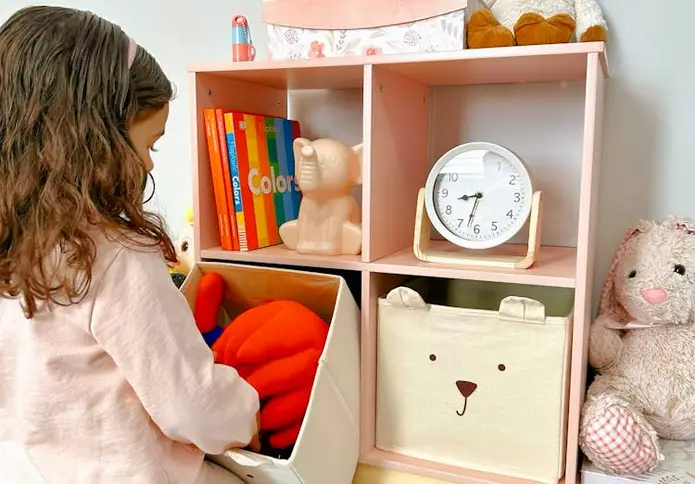
Before digital reading devices, kids’ bookshelves overflowed with well-loved paperbacks featuring broken spines, folded corners, and occasionally mysterious stains. Series collections stood in chronological order – The Baby-Sitters Club, Encyclopedia Brown, Choose Your Own Adventure, or Sweet Valley High – creating colorful rows of similar-sized spines that showcased literary preferences. School book fair purchases mingled with birthday gifts and library sale finds, creating eclectic personal libraries that reflected developing interests.
The contents of these shelves evolved as reading skills advanced, but nostalgic favorites often remained long after they’d been outgrown. Book reports and summer reading assignments left their mark in the form of penciled notes in margins or makeshift bookmarks forgotten between pages. For many children, these personal libraries represented freedom of choice and the ability to escape into different worlds whenever real life became too boring or challenging.
12. Novelty Lamp or Night Light
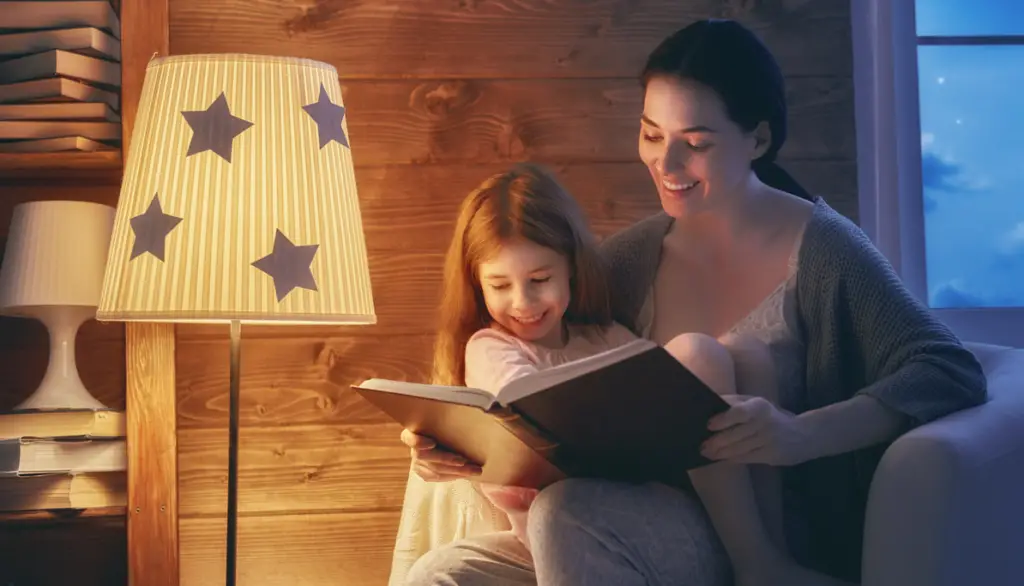
Functional lighting took creative forms in kids’ rooms, from ceramic figurine lamps to themed night lights that provided both illumination and decoration. Favorite cartoon characters, sports team mascots, or hobby-related designs transformed practical fixtures into expressions of personality, often received as birthday or holiday gifts. These lighting elements served practical purposes while reinforcing the room’s overall theme or the child’s current obsessions.
Night lights in particular often took whimsical forms – glowing spaceships, cartoon faces, or plug-in characters that created comforting pools of light in otherwise scary darkness. Many of these lighting fixtures violated contemporary safety standards with their easily accessible bulbs, dangerously heated surfaces, or questionable electrical components. Despite their potential hazards, these distinctive lamps often became cherished objects that survived multiple bedroom redesigns and sometimes even followed their owners into adulthood.
13. Toy Box Overflowing with Mismatched Sets
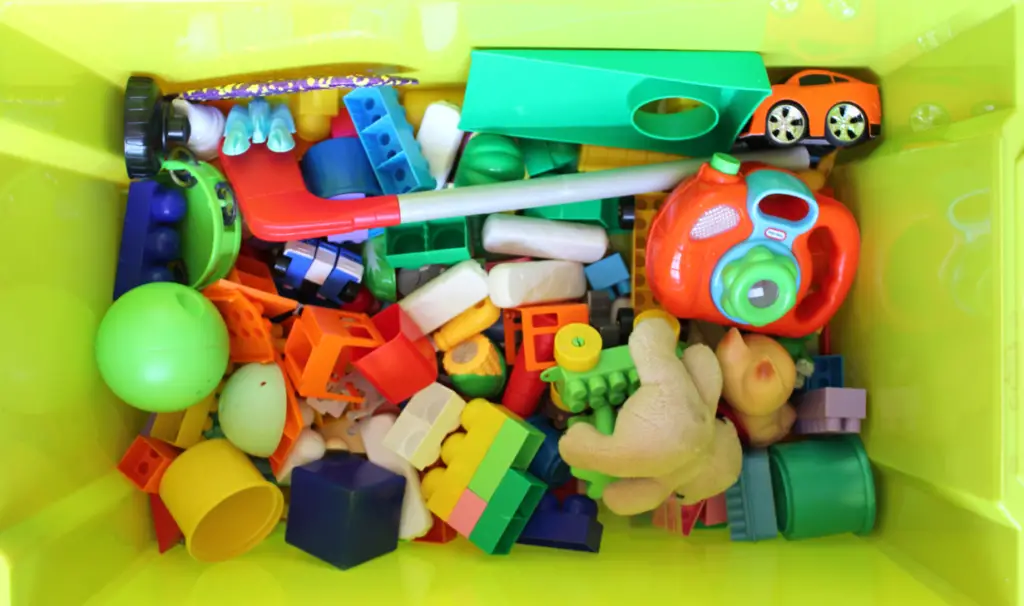
Before aesthetic toy rotation and minimalist parenting philosophies, most kids’ rooms featured a large toy box perpetually filled beyond capacity with an archaeological record of childhood interests. Partial action figure collections, board games missing essential pieces, forgotten craft projects, and random Happy Meal toys created layers of play possibilities and history. The toy box often featured safety hinges installed after at least one incident involving pinched fingers and dramatic tears.
Cleaning the toy box became an occasional archaeological expedition, unearthing long-forgotten treasures and prompting hours of rediscovery play instead of actual organization. Parents’ threats to “clean out” this container were met with fierce protection, as children instinctively understood the value of these random collections even if individual pieces seemed dispensable. Unlike today’s categorized storage systems with visible bins and labels, the traditional toy box preserved an element of surprise and discovery that made everyday play more adventurous.
Looking back at these bedroom staples reminds us that childhood spaces once evolved organically rather than following design trends. These rooms weren’t styled for anyone’s approval – they were functional, personal spaces where interests could be explored and identities formed away from judgmental eyes. Perhaps today’s children are missing something important in their perfectly coordinated rooms: the freedom to create truly personal spaces that prioritize comfort, creativity, and self-expression over aesthetic appeal.


